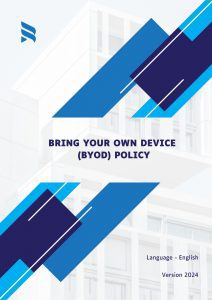Protecting your personal privacy on the internet has become increasingly crucial. From social media oversharing to data breaches, there are numerous threats to our privacy online. However, with the right knowledge and tools, you can take proactive steps to safeguard your digital footprint. Here are some essential tips to help you protect your personal privacy on the internet:
- Use Strong, Unique Passwords:
One of the simplest yet most effective ways to protect your online accounts is by using strong, unique passwords for each account. Avoid using easily guessable passwords such as “password123” or common phrases. Instead, opt for longer passwords with a mix of letters, numbers, and special characters.
- Enable Two-Factor Authentication (2FA):
Adding an extra layer of security to your accounts with two-factor authentication can significantly reduce the risk of unauthorized access. Whether it’s through SMS codes, authenticator apps, or biometric authentication, 2FA adds an additional barrier for anyone attempting to access your accounts.
- Be Mindful of What You Share:
Think twice before sharing personal information on social media or other online platforms. Details such as your full name, address, phone number, and even your birthdate can be exploited by malicious actors. Limit the amount of personal information you share online to minimize the risk of identity theft or stalking.
- Review Privacy Settings:
Take the time to review the privacy settings on your social media accounts, email accounts, and other online services. Adjusting these settings can help you control who can see your posts, photos, and other personal information. Regularly review and update these settings to ensure they align with your privacy preferences.
- Use Secure Communication Channels:
When communicating online, especially when sharing sensitive information, opt for secure communication channels such as encrypted messaging apps or email services. End-to-end encryption ensures that only you and the intended recipient can access the contents of your messages.
- Beware of Phishing Attempts:
Be cautious of unsolicited emails, messages, or links from unknown sources, as they could be phishing attempts aimed at stealing your personal information or spreading malware. Always verify the sender’s identity and avoid clicking on suspicious links or downloading attachments from unfamiliar sources.
- Regularly Update Software and Devices:
Keep your operating system, software applications, and devices up to date with the latest security patches and updates. Software updates often include fixes for known vulnerabilities that could be exploited by cybercriminals to gain unauthorized access to your data.
- Use Virtual Private Networks (VPNs):
When browsing the internet, especially on public Wi-Fi networks, consider using a VPN to encrypt your internet connection and protect your online activities from prying eyes. VPNs help mask your IP address and location, enhancing your anonymity and privacy online.
- Monitor Your Online Accounts:
Regularly monitor your online accounts for any suspicious activity or unauthorized access. Set up alerts or notifications for account logins, password changes, and other account activities to quickly identify and respond to any potential security threats.
- Educate Yourself About Online Privacy:
Stay informed about the latest privacy threats and best practices for protecting your personal information online. Take advantage of resources such as online privacy guides, articles, and tutorials to deepen your understanding of digital privacy issues and how to mitigate them.
By following these tips and adopting good digital hygiene practices, you can better protect your personal privacy on the internet and reduce the risk of falling victim to online threats. Remember, safeguarding your digital privacy is an ongoing effort that requires vigilance and proactive measures to stay one step ahead of cyber threats.
To further empower yourself in managing your digital privacy, you may also consider exercising your rights under data protection regulations. If you’re curious about what data companies hold about you and how they use it, you can submit a Data Subject Access Request (DSAR). This request allows you to obtain a copy of the personal data that companies hold about you and understand how they process it.













